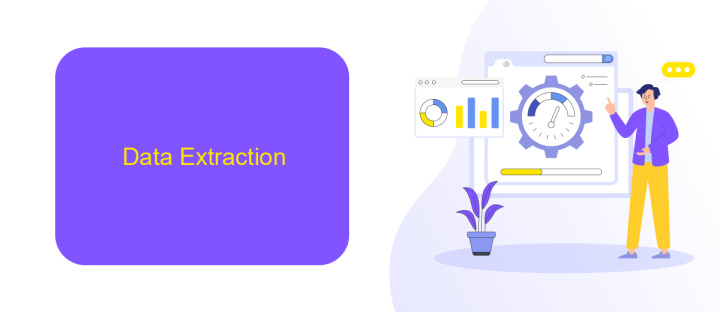Data Warehouse Integration Layer
The Data Warehouse Integration Layer is a crucial component in modern data management, serving as the bridge between disparate data sources and the central data warehouse. It ensures seamless data flow, consistency, and accuracy, enabling organizations to make informed decisions based on comprehensive and unified data insights. This article explores the key functionalities, benefits, and best practices of implementing an effective integration layer.
Introduction
Data Warehouse Integration Layer is a critical component in modern data management strategies, enabling organizations to consolidate data from various sources into a single repository. This integration layer simplifies data analysis, enhances decision-making, and improves overall business intelligence capabilities.
- Streamlined Data Consolidation: Integrates data from multiple sources into one unified platform.
- Improved Data Quality: Ensures consistency and accuracy across datasets.
- Enhanced Analytics: Facilitates advanced data analysis and reporting.
- Scalability: Supports growing data volumes and evolving business needs.
One of the tools that can significantly aid in setting up and managing data integrations is ApiX-Drive. This service provides a user-friendly interface for connecting various data sources and automating data flows, making it easier for businesses to maintain an efficient data warehouse integration layer. By leveraging such services, organizations can focus more on deriving insights from their data rather than getting bogged down by integration complexities.
Data Extraction

Data extraction is a critical step in the data warehousing process, involving the retrieval of data from various source systems. This process ensures that data is collected from multiple sources, such as databases, cloud services, and on-premise applications, and is then made available for further processing and analysis. Effective data extraction requires robust tools and techniques to handle diverse data formats, structures, and volumes, ensuring the integrity and accuracy of the extracted data.
One effective way to streamline data extraction is by using integration services like ApiX-Drive. ApiX-Drive provides a user-friendly platform that simplifies the setup of integrations between different data sources and your data warehouse. It supports a wide range of applications and services, allowing for seamless data flow and real-time synchronization. By leveraging ApiX-Drive, organizations can automate the data extraction process, reduce manual effort, and ensure timely and accurate data availability for decision-making and analytics.
Data Transformation

Data transformation is a critical phase in the Data Warehouse Integration Layer, where raw data is converted into a meaningful format for analysis. This process involves cleaning, filtering, and enriching data to ensure its quality and relevance. Effective data transformation enhances the accuracy of business insights and decision-making.
- Data Cleaning: Removing inaccuracies and inconsistencies from the data.
- Data Filtering: Selecting relevant data for analysis.
- Data Enrichment: Adding valuable information to the data.
Tools like ApiX-Drive facilitate seamless data transformation by providing automated workflows that integrate various data sources. With ApiX-Drive, businesses can set up custom transformation rules, ensuring that data is consistently prepared for analysis. This not only saves time but also reduces the risk of human error, making the data transformation process more efficient and reliable.
Data Integration

Data integration is a crucial aspect of managing a Data Warehouse, enabling the seamless combination of data from various sources into a unified repository. This process ensures that data is consistent, accurate, and readily available for analysis and reporting. Effective data integration enhances decision-making by providing a comprehensive view of the organization's data.
Several methods and tools can be employed to achieve efficient data integration. These include ETL (Extract, Transform, Load) processes, data replication, and data virtualization. Each method has its strengths and is chosen based on specific business needs and technical requirements.
- ETL processes: Extract data from multiple sources, transform it into a suitable format, and load it into the Data Warehouse.
- Data replication: Copy data from one database to another to ensure consistency and availability.
- Data virtualization: Create a virtual view of data from different sources without physically moving it.
Tools like ApiX-Drive can simplify the integration process by automating data transfers between various applications and databases. This service supports numerous connectors, enabling seamless data flow and reducing the complexity of manual data handling. By utilizing such tools, organizations can streamline their data integration efforts, ensuring timely and accurate data availability.
Data Validation
Data validation is a critical component of the Data Warehouse Integration Layer, ensuring the accuracy, consistency, and reliability of the data being integrated. This process involves verifying that the data meets predefined quality standards and business rules before it is loaded into the data warehouse. Various techniques such as data profiling, data cleansing, and data transformation are employed to identify and rectify errors, inconsistencies, and duplications. These steps help maintain the integrity of the data, which is essential for accurate reporting and analysis.
To streamline the data validation process, integration services like ApiX-Drive can be utilized. ApiX-Drive offers robust tools for automating data integration and validation tasks, reducing manual effort and minimizing the risk of errors. By using such services, organizations can set up automated workflows that continuously monitor and validate data as it flows into the data warehouse. This ensures that only high-quality, validated data is available for business intelligence and decision-making purposes, enhancing the overall efficiency and effectiveness of the data integration process.
FAQ
What is a Data Warehouse Integration Layer?
Why is the Integration Layer important in a Data Warehouse architecture?
How does the Integration Layer handle data from multiple sources?
Can the Integration Layer handle real-time data?
What tools can be used to automate and configure integrations in the Integration Layer?
Apix-Drive will help optimize business processes, save you from a lot of routine tasks and unnecessary costs for automation, attracting additional specialists. Try setting up a free test connection with ApiX-Drive and see for yourself. Now you have to think about where to invest the freed time and money!

